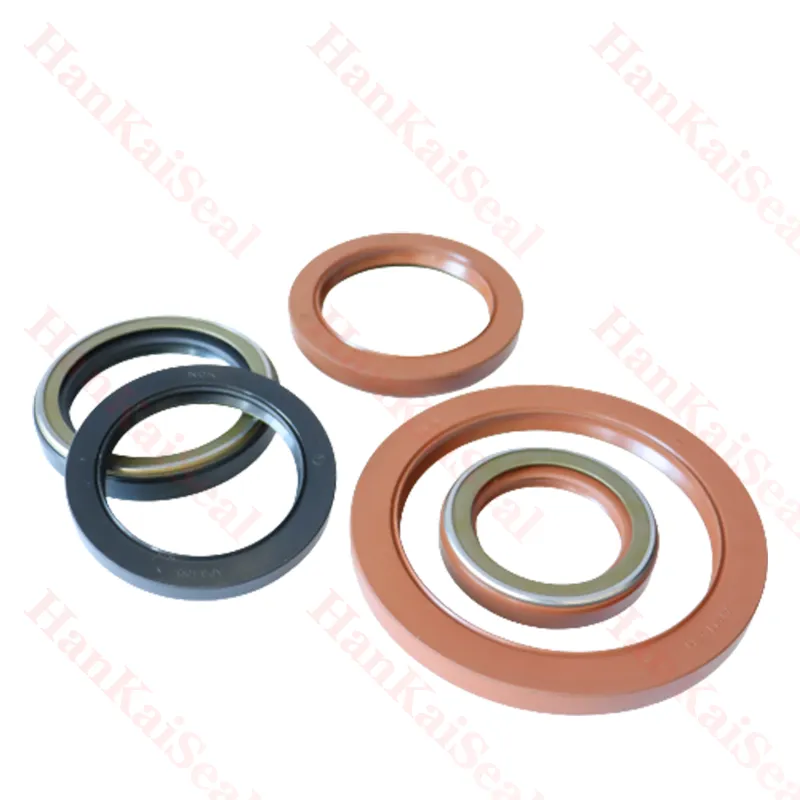Nov . 29, 2024 22:52 Back to list
Understanding Wiper Rod Seal Functionality and Importance in Hydraulic Systems
Understanding Wiper Rod Seals Function, Types, and Maintenance
Wiper rod seals play a critical role in various hydraulic systems, particularly in applications involving excavators, loaders, and other heavy equipment. These seals are designed to prevent the entry of contaminants such as dust, dirt, and moisture into the hydraulic systems while also keeping hydraulic fluid contained within the cylinder. With the increasing reliance on hydraulic systems in industrial and construction applications, understanding the importance and maintenance of wiper rod seals has never been more relevant.
Function of Wiper Rod Seals
The primary function of a wiper rod seal is to act as a barrier that protects the internal components of hydraulic cylinders. When hydraulic systems are in operation, the hydraulic fluid exerts substantial pressure, making it crucial to maintain an airtight seal. Wiper seals ensure that any contamination from the external environment does not compromise the integrity of the hydraulic fluid. By preventing foreign particles from entering, these seals help maintain operational efficiency and extend the life of the hydraulic components.
Moreover, wiper rod seals play a pivotal role in minimizing fluid leakage. A well-designed wiper seal will not only prevent contamination but also help in maintaining the necessary pressure within the hydraulic system. This dual function of sealing and wipering is essential for optimal performance and reliability of hydraulic equipment.
Types of Wiper Rod Seals
Wiper rod seals come in various types, each designed to cater to specific applications and operational conditions. The most common materials used in the manufacturing of wiper seals include polyurethane, rubber, and synthetic materials.
1. Polyurethane Seals These are widely preferred due to their excellent wear resistance and ability to withstand harsh environmental conditions. Polyurethane seals are ideal for heavy-duty applications where durability is paramount.
2. Rubber Seals Rubber wiper seals serve as a cost-effective solution and are typically used in light to medium-duty applications. They are effective in preventing contaminants but may not have the same longevity as polyurethane options.
wiper rod seal

3. Composite and Synthetic Seals These advanced materials are often engineered to provide superior resistance to extreme temperatures and pressures. They are particularly effective in specialized applications where conventional materials may fail.
4. Triple Lip Seals This design incorporates three sealing lips to enhance protection against contaminants, ensuring a higher level of safety for hydraulic systems. They are particularly suited for situations where contamination is a significant concern.
Maintenance of Wiper Rod Seals
Maintaining wiper rod seals is essential to ensure the longevity and efficiency of hydraulic systems. Regular inspection is crucial to identify signs of wear, such as cracks, abrasions, or changes in elasticity. Operators should routinely clean the cylinder surfaces and the seals themselves to remove any accumulated debris. This preventive maintenance helps in minimizing the risk of seal failure.
The replacement of wiper seals at regular intervals—based on manufacturer recommendations or operational demands—can significantly reduce the chances of leaks and contamination. When replacing the seals, it is essential to ensure that the new seals are correctly sized and fitted to avoid any discrepancies that could lead to failures.
In addition, proper installation techniques should be employed to avoid damaging the new seals. Using the right tools and following best practices while handling seals can make a significant difference in their performance and lifespan.
Conclusion
Wiper rod seals are indispensable components of hydraulic systems, ensuring cleanliness and functionality. Understanding their function, types, and maintenance requirements is essential for anyone involved in the operation or maintenance of hydraulic machinery. By maintaining these seals effectively, operators can enhance the reliability of their equipment, reduce operational costs, and extend the life of their hydraulic systems.
-
TCN Oil Seal Metal Ring Reinforcement for Heavy Machinery
NewsJul.25,2025
-
Rotary Lip Seal Spring-Loaded Design for High-Speed Applications
NewsJul.25,2025
-
Hydraulic Cylinder Seals Polyurethane Material for High-Impact Jobs
NewsJul.25,2025
-
High Pressure Oil Seal Polyurethane Coating Wear Resistance
NewsJul.25,2025
-
Dust Proof Seal Double Lip Design for Construction Equipment
NewsJul.25,2025
-
Hub Seal Polyurethane Wear Resistance in Agricultural Vehicles
NewsJul.25,2025
-
The Trans-formative Journey of Wheel Hub Oil Seals
NewsJun.06,2025
Products categories
















